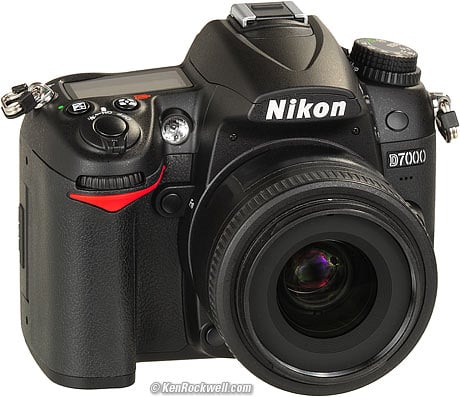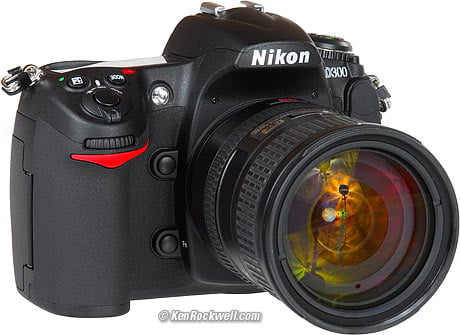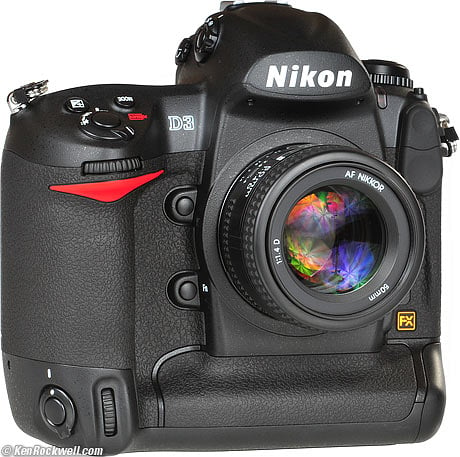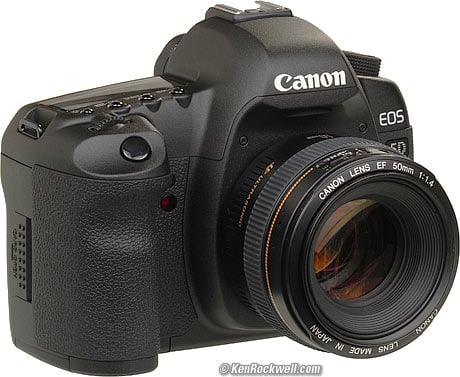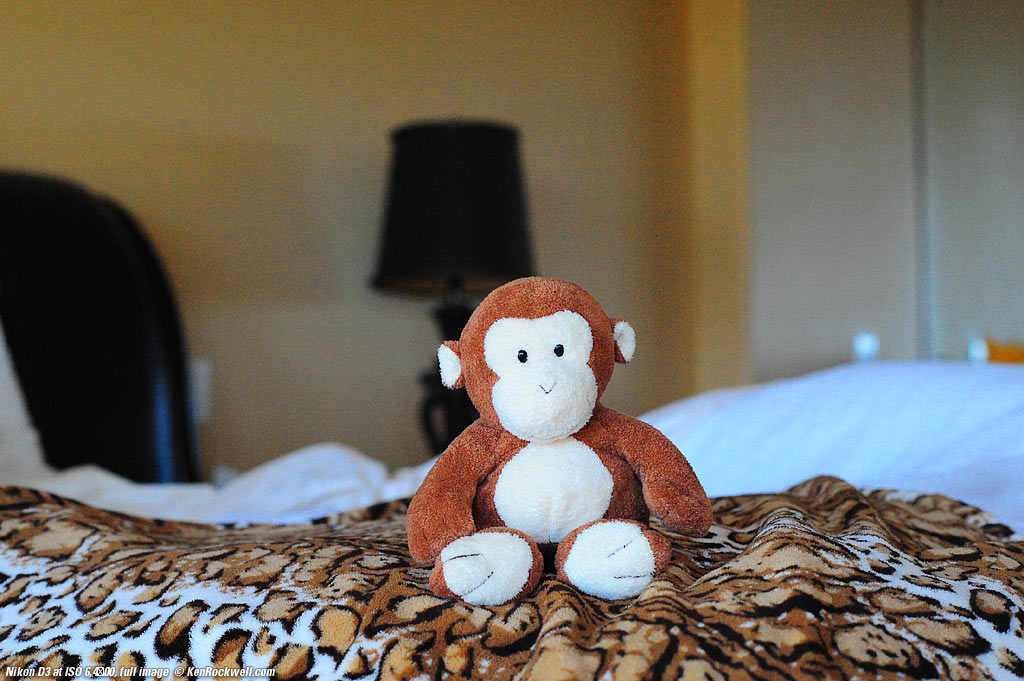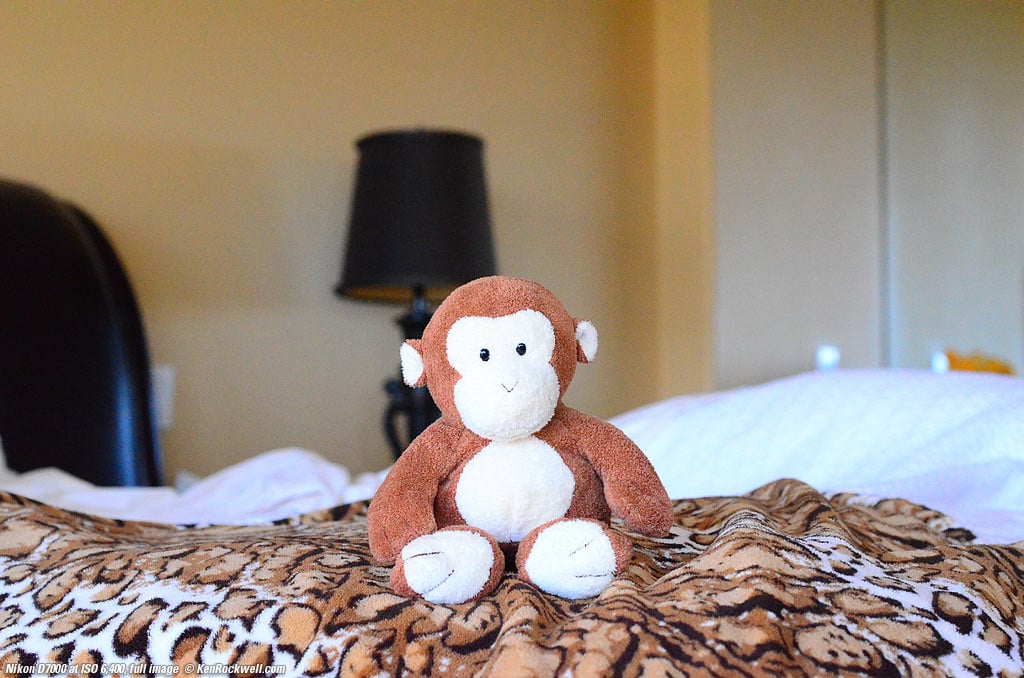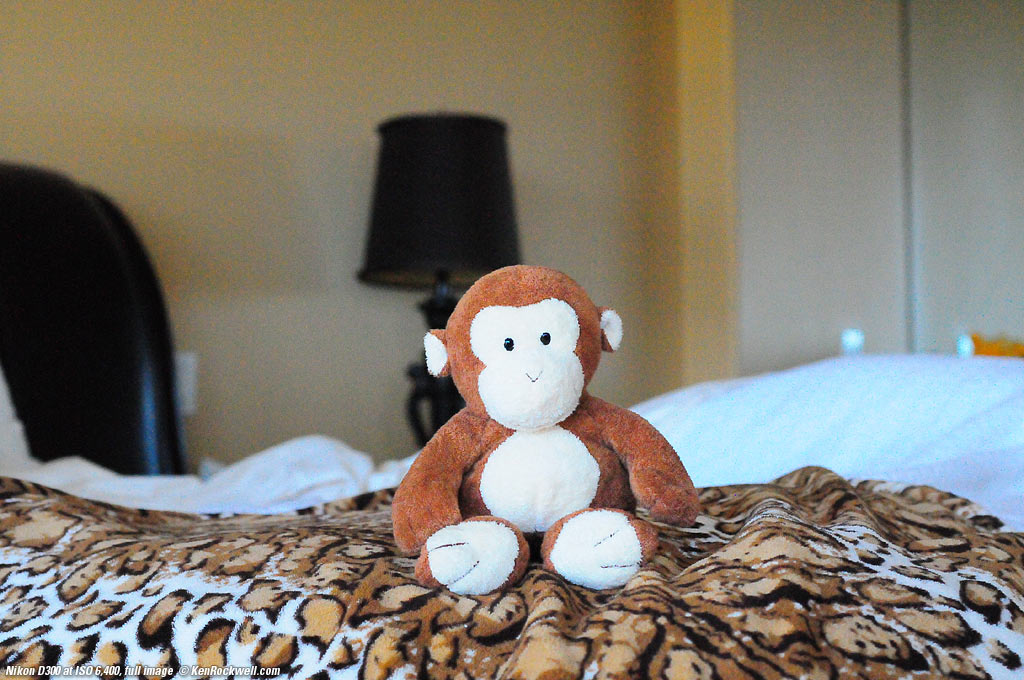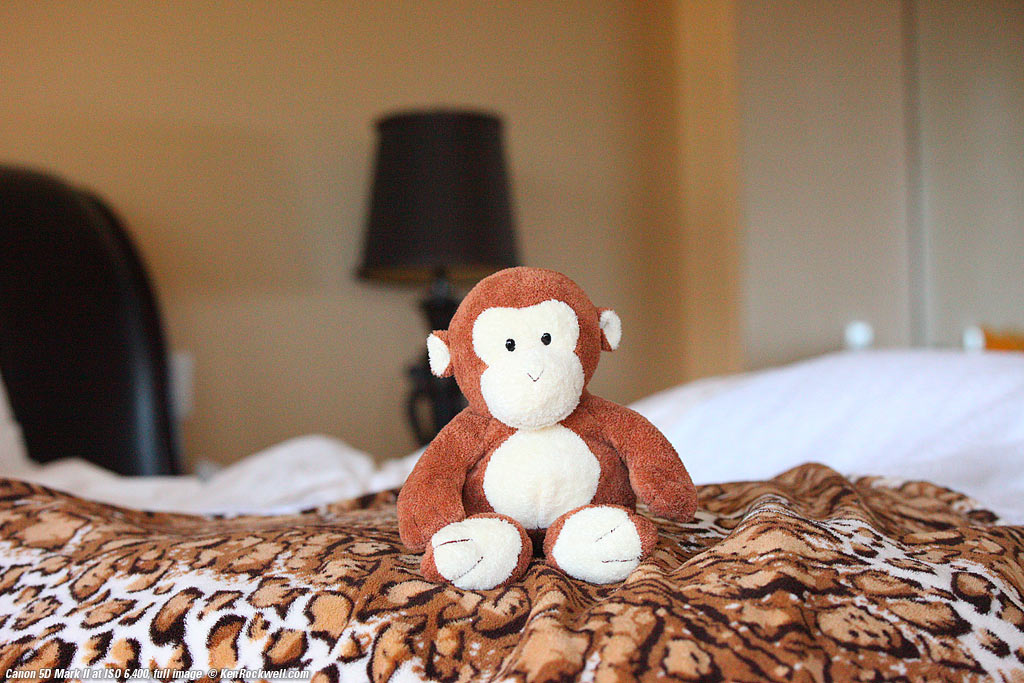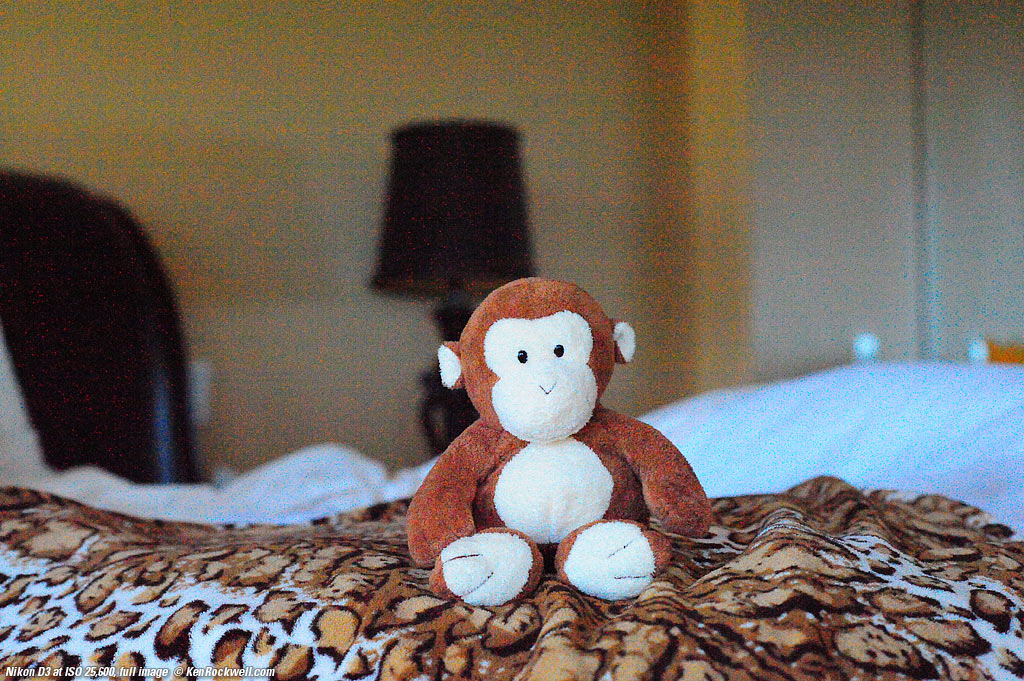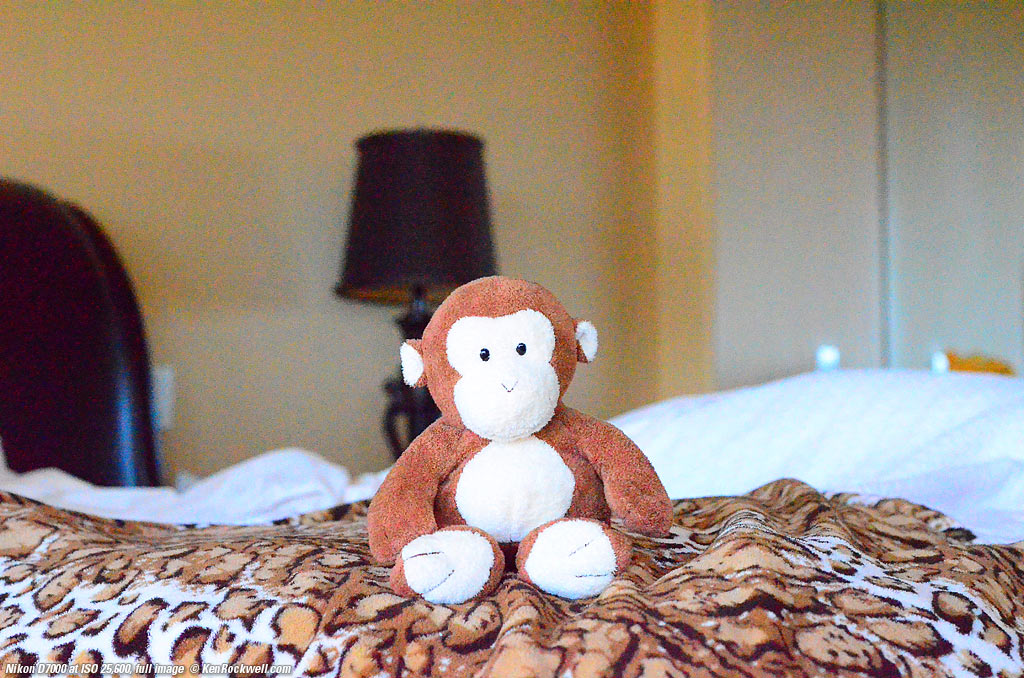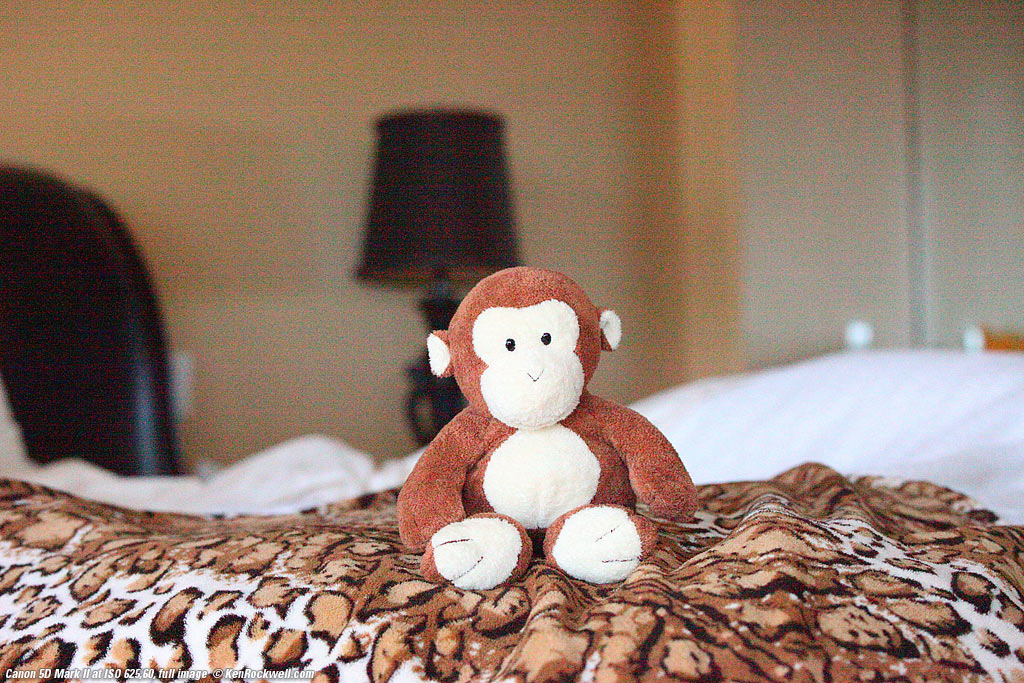Home Donate New Search Gallery How-To Books Links Workshops About Contact Nikon D7000, D300, D3 (D700) and Canon 5D Mark II High ISO Comparison Intro Images Analysis Teknik Recommendations It helps me keep adding to this site when you use these links to Adorama, Amazon, B&H, Calumet, Ritz, J&R and eBay to get your goodies. Thanks! Ken.
November 2010 More Nikon Reviews Canon LEICA Pentax
Introduction top Intro Images Analysis Teknik Recommendations Let's compare the technical performance of the Nikon D7000, Nikon D300, Nikon D3 and Canon 5D Mark II at all ISOs. (The Nikon D3 has the same sensor and performance as the Nikon D700.) This will show us both the high-ISO performance, as well as the relative definition, resolution, clarity and image cleanliness of each camera. On most computer monitors at 100 DPI, these are small sections from what would be gallery-sized 50 x 33" (125 x 85cm) prints, if printed in their entirety. At smaller sizes, these differences would be less obvious. These are highly enlarged crops from same-size prints of the same subject shot from the same place with the same angle-of view. I've also included free, at no charge, full-image views at ISO 6,400 and ISO 25,600 to let you see the different craziness that goes on in each image on a macro scale, which will be obvious at every print size. You may click any image to get to that camera's detailed review. |
ISO 200 200 400 800 1,600 3,200 6,400 12,800 25,600 top
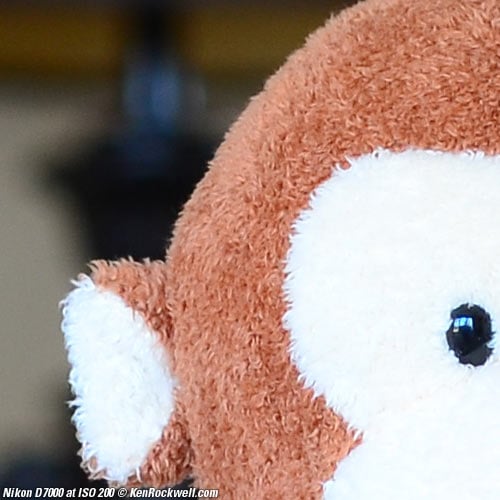 |
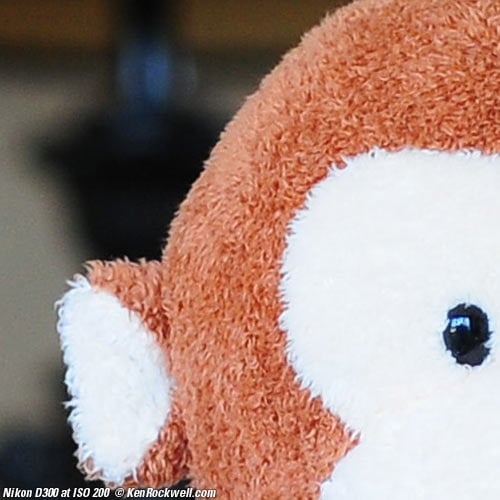 |
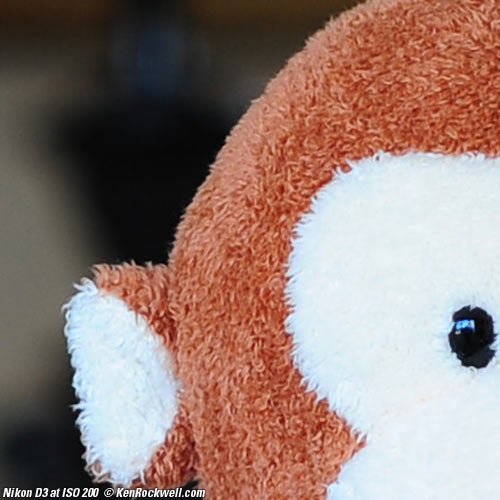 |
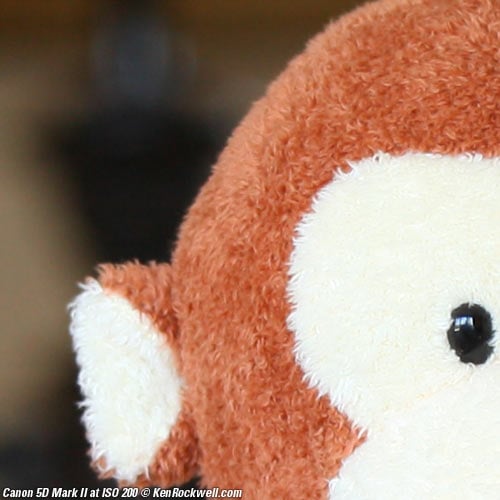 |
ISO 400 200 400 800 1,600 3,200 6,400 12,800 25,600 top
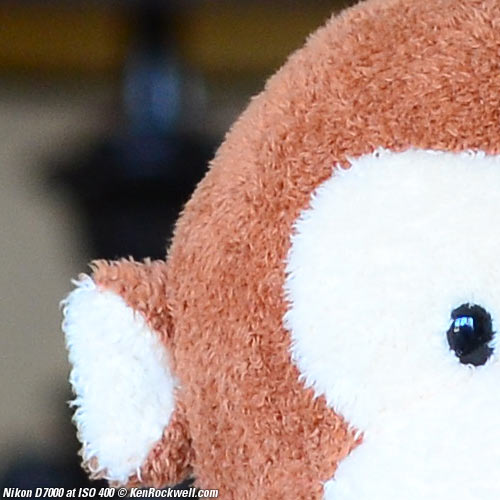 |
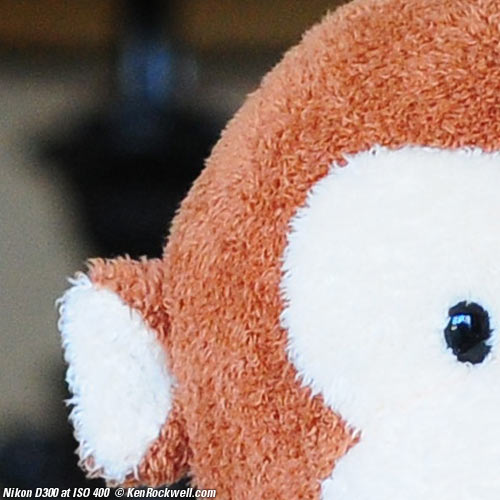 |
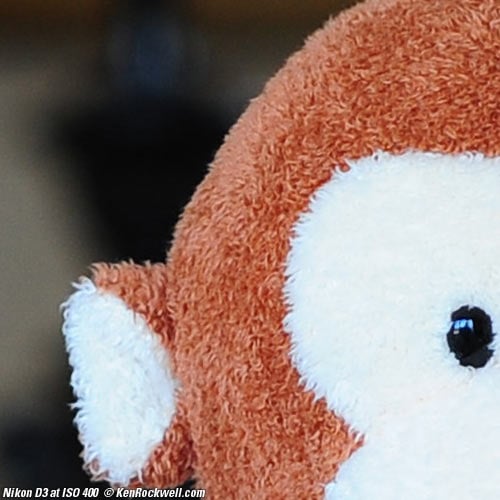 |
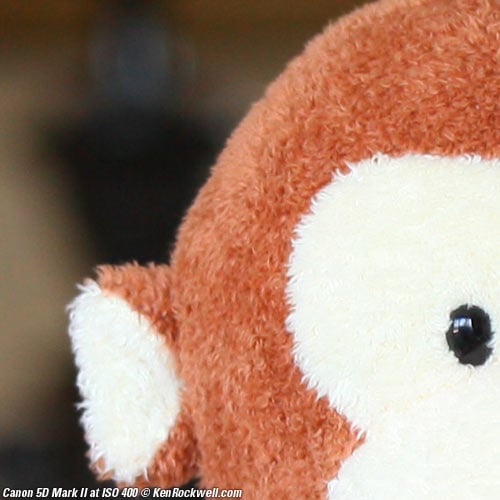 |
ISO 800 200 400 800 1,600 3,200 6,400 12,800 25,600 top
 |
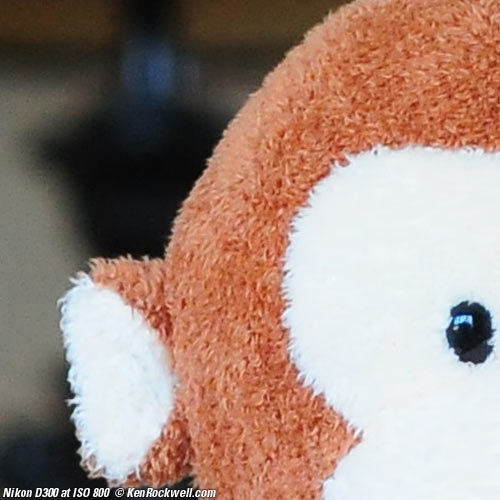 |
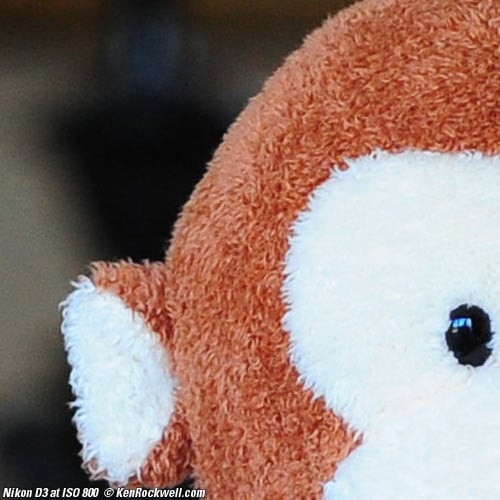 |
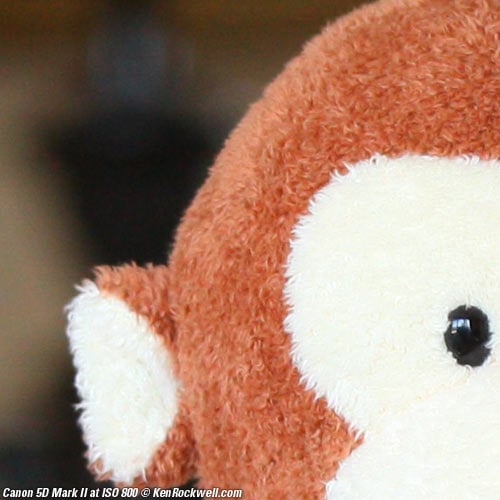 |
ISO 1,600 200 400 800 1,600 3,200 6,400 12,800 25,600 top
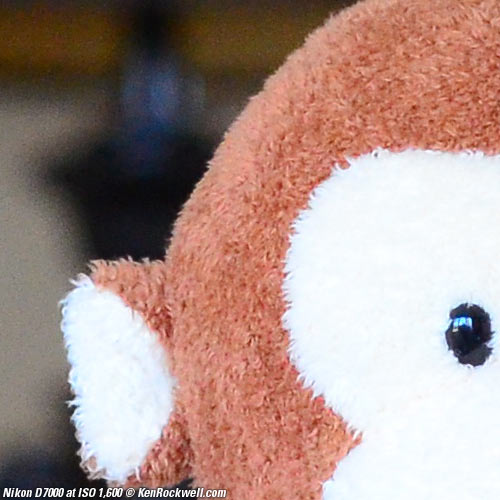 |
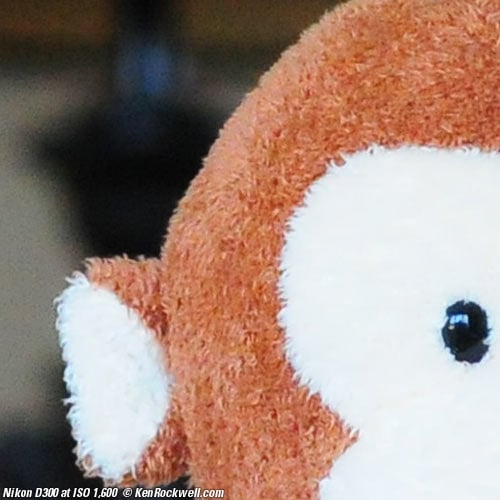 |
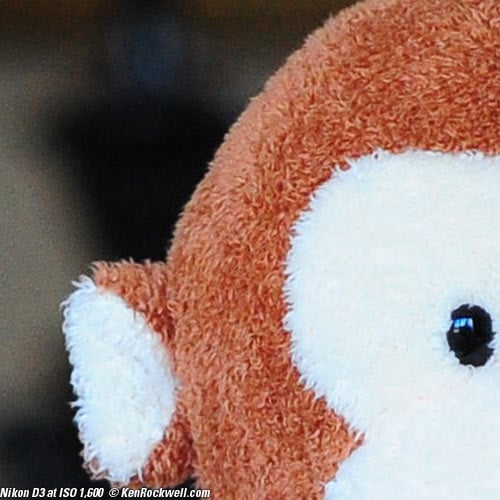 |
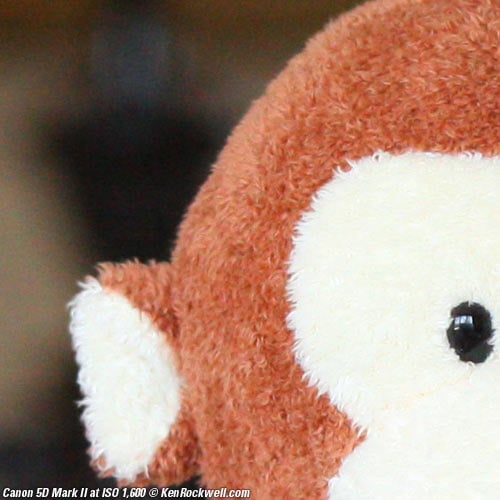 |
ISO 3,200 200 400 800 1,600 3,200 6,400 12,800 25,600 top
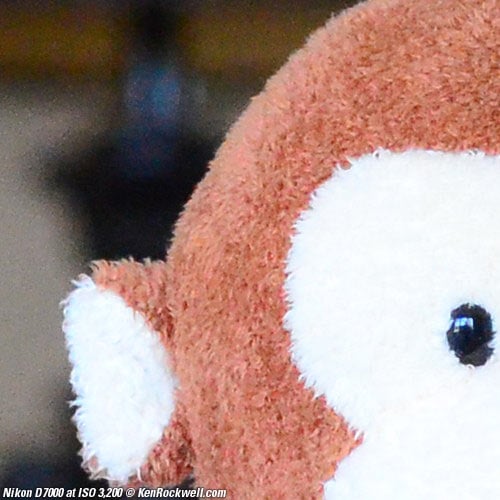 |
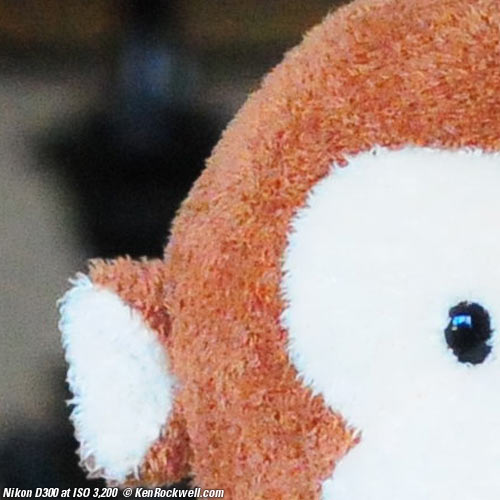 |
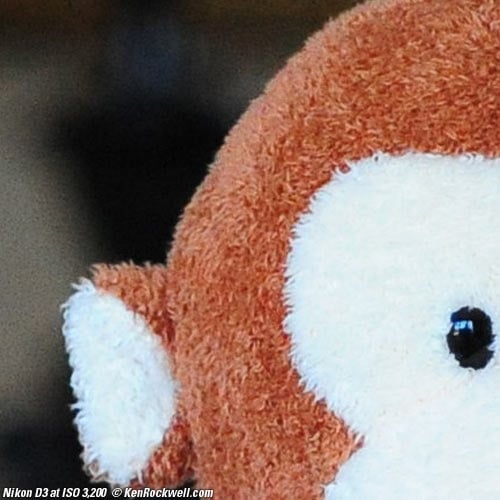 |
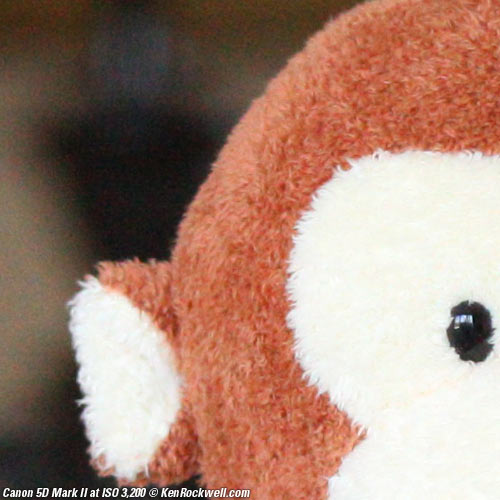 |
ISO 6,400 200 400 800 1,600 3,200 6,400 12,800 25,600 top
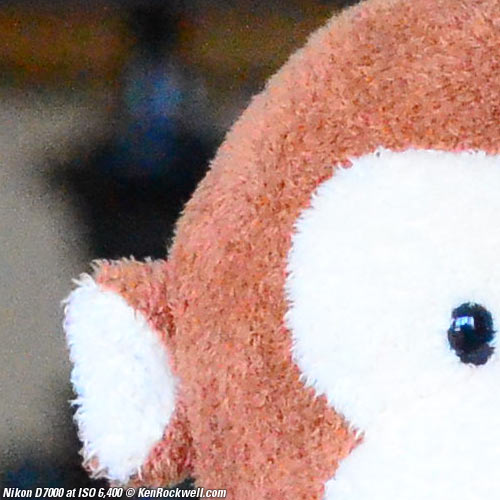 |
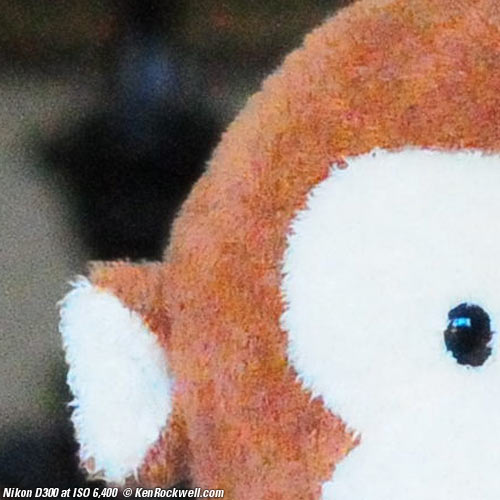 |
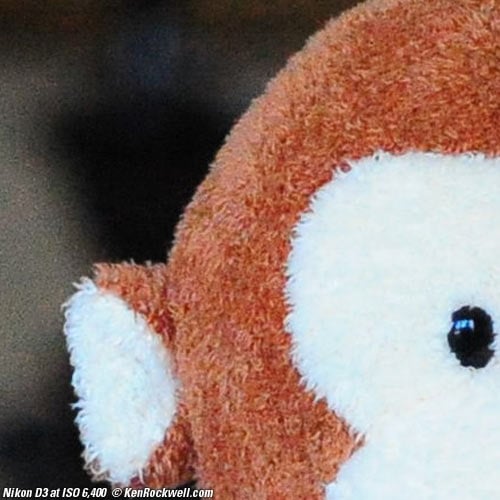 |
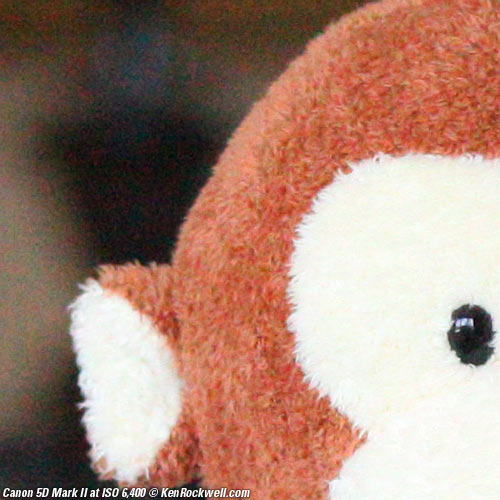 |
ISO 12,800 200 400 800 1,600 3,200 6,400 12,800 25,600 top
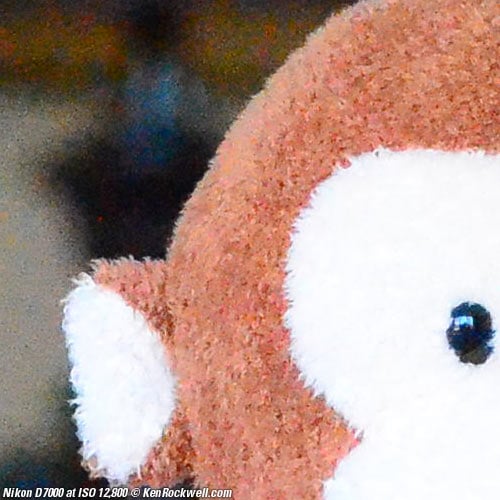 |
|
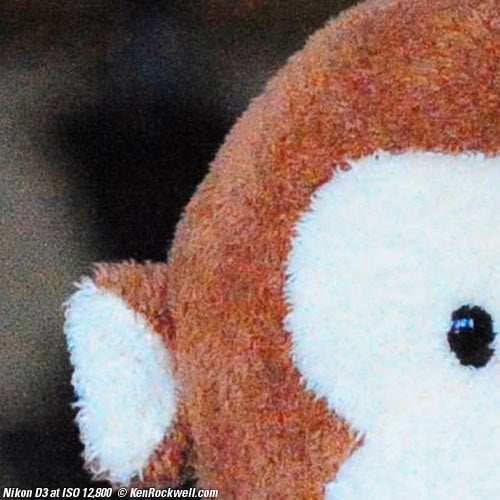 |
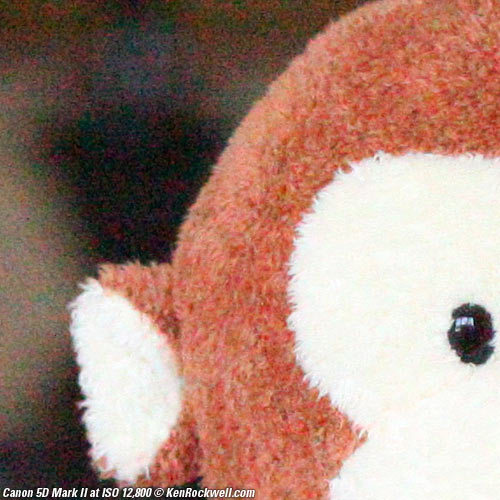 |
ISO 25,600 200 400 800 1,600 3,200 6,400 12,800 25,600 top
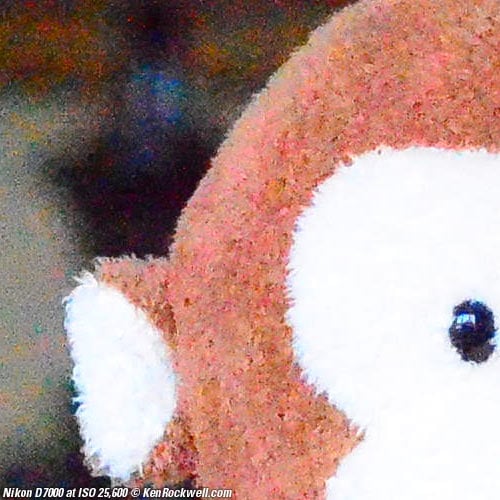 |
|
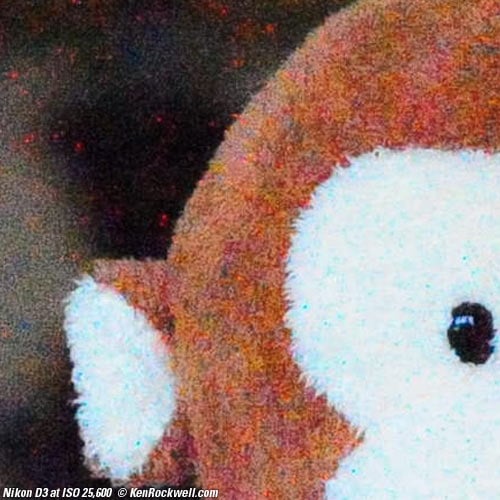 |
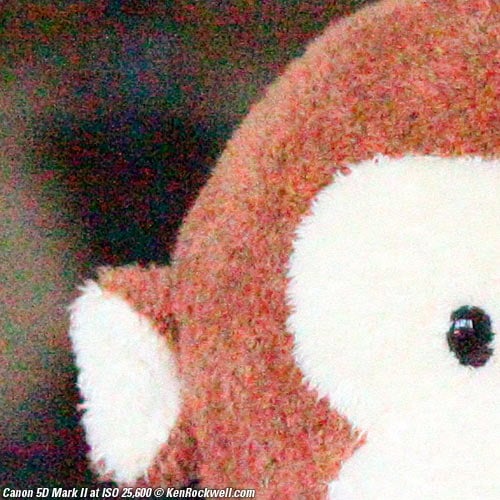 |
Analysis top Intro Images Analysis Teknik Recommendations I expected the D7000 to be the cleanest, and it is. I expected the D300 to be the softest, and it is. The D300 uses too much noise reduction, and paints-over all the subject texture at high ISOs. The D3 retains the most detail and subject texture at high ISOs, as expected from FX. The DX cameras use a lot more noise reduction to try to smooth-over the noise, and remove subject texture and details at the same time. Look at the monkey fur even at ISO 6,400: the D3 is crisp, while the D7000 is softer, and the D300 is just mush. The Canon 5D Mark II looks softer, but that's because I didn't have its sharpening amped-up as I did in all the Nikons. Be forewarned, with the 5D Mark II's sharpening set higher, it would be noisier as well. At ISO 25,600, the Nikon D3 is loaded with red noise specks (and its highlights loaded with smaller blue specks), while the Canon 5D Mark II shows horizontal banding in its noise. At ISO 25,600, the Nikon D7000 is noisy, but devoid of annoying artifacts, making it much more usable at ISO 25,600 than any of these other cameras.
Teknik top Intro Images Analysis Teknik Recommendations These images are shown at the same size, shot from the same place, with lenses of equal angle-of-view, with the same manual exposure. The only setting that varied with ISO was the manual shutter speed. The D7000 images are shown at 100%, while the other cameras were resampled as needed in Photoshop CS5 (bicubic) to ensure a fair comparison. The same equivalent focal length was used for each camera. I shot with the sharpest lens for each camera: The Nikon AF MICRO-NIKKOR 55mm f/2.8 for DX cameras, the Nikon AF-S NIKKOR 85mm f/1.4 G for the D3, and the sharpest zoom in existence, the Canon 70-200mm f/4 IS L at 85mm on the 5D Mark II. All cameras were shot at their Daylight white balance settings. I turned off all the shadow and highlight optimization, simply because Nikon's system works better, and therefore also exaggerates the noise more, than Canon's. All Nikons had their Picture Controls amped-out as I usually shoot them: VIVID and +3 saturation, and Sharpening at 6. Nikons had their High ISO NRs set to NORMAL. The Canon 5D Mark II was left at standard sharpening, with its saturation set to +3, and its noise reduction turned to OFF, since it is overactive and dulls details. This is how I shoot it every day, and as you can see, the 5D Mark II is still the softest camera here as set. Everything was shot at f/5.6 on a tripod. Exposures were set manually at 1/15 at ISO 200, and so forth. Any exposure differences you see among the cameras are variations from the correct ISOs, or differences in calibration between the lenses. Some cameras cheat and don't quite shoot at the actual ISOs at the faster settings, to keep down the noise. The D3 looks darker everywhere, probably due to the calibration of the 85's diaphragm compared to the other two lenses. Ignore the blown-highlights; I was too lazy to shoot this down a third of a stop because I'd probably make a mistake in my head transposing odd shutter speeds. To show each camera fairly, I used actual images directly from each camera. If I had shot raw data instead, I would have needed to process each file with software to turn that data into a visible image, which also would have shown differences in each piece of software's interpretation as well as differences between cameras. Unknown to most casual users is that even if I used the same software, say Adobe Camera Raw, it processes files from different cameras differently. By using real JPGs, we can see exactly what each camera is doing. Feel free to run your own experiments with raw data if you prefer. Sharper renditions will enhance detail, but exaggerate noise, and vice versa. Ditto for differences in letting Adobe or whoever do the noise reduction instead of the cameras themselves in JPG. If you want these results in raw data, shoot it yourself and please share with us the results as I do.
Recommendations top Intro Images Analysis Teknik Recommendations At normal print sizes, all these cameras can make swell photos, especially at low ISOs. The D7000 is easily the cleanest, but I prefer the D3 because it retains subject texture better. I want to see things as they are, not all smoothed-over, at high ISOs. The D300 is the worst, as expected. Nikon deliberately used too much noise reduction to get the D300 to test well back when it came out, even though it makes the images look almost cartoon-like with their lack of real subject texture at high ISOs.
Help me help you top I support my growing family through this website, as crazy as it might seem. The biggest help is when you use any of these links when you get anything. It costs you nothing, and is this site's, and thus my family's, biggest source of support. These places always have the best prices and service, which is why I've used them since before this website existed. I recommend them all personally. If you find this as helpful as a book you might have had to buy or a workshop you may have had to take, feel free to help me continue helping everyone. If you've gotten your gear through one of my links or helped otherwise, you're family. It's great people like you who allow me to keep adding to this site full-time. Thanks! If you haven't helped yet, please do, and consider helping me with a gift of $5.00. As this page is copyrighted and formally registered, it is unlawful to make copies, especially in the form of printouts for personal use. If you wish to make a printout for personal use, you are granted one-time permission only if you PayPal me $5.00 per printout or part thereof. Thank you! Thanks for reading!
Ken Home Donate New Search Gallery How-To Books Links Workshops About Contact |

